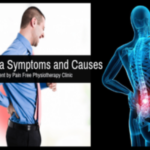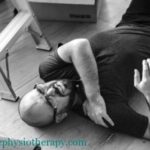How Physiotherapy Helps Covid-19 Patients Recover From Breathing Problems?
Covid-19 is a dangerous and highly contagious virus that infects the respiratory system of the patient. Some patients will report no symptoms, which is known as being asymptomatic. However, other patients may become very ill and may even die as a result of the virus.
Severe Covid-19 may cause shortness of breath. The patient may struggle to breathe and may require oxygen in order to survive. Covid-19 can drastically affect the quality of life of the affected individual.
If you or someone you love is currently dealing with Covid-19 then chest physiotherapy and breathing exercises can be used as a form of adjuvant therapy.
Covid-19 patients can benefit greatly from physiotherapy if they wish to accelerate the recovery process and treat their breathing problems.
Here, we will focus on how physiotherapy can be used in order to help Covid-19 patients recover from their breathing problems.
How does Covid-19 cause shortness of breath?
Some patients may feel out of breath all the time. Others describe their shortness of breath as having trouble taking breaths that are deep or satisfying. In very severe cases the patient may continually struggle or gasp in order to catch their breath.
Some patients report having tightness in their chest. The shortness of breath symptom can develop fast and can take as little as 2 days in some cases. In other cases, it may take up to 2 weeks for the shortness of breath to develop.
According to recent research, the average onset of breathing problems develops roughly 5 days after the initial Covid-19 symptoms develop, which may include headaches, fever, sore throat, chills, and coughing.
Some patients with Covid-19 may develop Acute Respiratory Distress Syndrome (ARDS). In order for ARDS to develop the virus must penetrate the patient’s lower respiratory tract. When this happens the lungs become damaged and the patient becomes very ill. Organs become deprived of oxygen and begin to suffer severe damage.
The body attempts to repair the damage by triggering an inflammatory response. Unfortunately, the inflammatory response serves to further damage the patient’s organs.
ARDS is very dangerous and usually requires hospitalization in the intensive care unit. The patient may need mechanical or artificial ventilation in order to breathe. In the past, ARDS was linked to bacterial pneumonia and sepsis.
Today, Covid-19 and variants of the deadly virus have also been linked to ARDS.
The Recovery of Covid-19 Patients With Physiotherapy
Chest physiotherapy involves the use of special breathing techniques in order to remove fluid from the lungs of the patient. Airway clearance is ameliorated in order to optimize respiratory efficiency.
The effort involved in breathing is reduced so that the shortness of breath and the struggle to breathe is eliminated or severely reduced.
This therapy prevents the lungs from collapsing and helps them expand in order to boost breathing efficiency. Chest physiotherapy serves as an adjuvant treatment in order to treat chronic respiratory diseases such as COPD and cystic fibrosis.
It may also be used in order to treat neuromuscular diseases, such as cerebral palsy and muscular dystrophy.
Manual handling techniques may be used in order to foster mucociliary clearance. Vibrational and percussive modalities may also be administered. Postural drainage is also a key component of conventional chest therapy.
Postural discharge involves using the benefits of gravity in order to position the patient in a manner that facilitates conventional clearance mechanisms. Secretions are drained by reaching the central airways via gravity.
Once the secretions have reached the central airways they are expelled manually via coughing. In some cases, mechanical aspiration may be used in order to extract the fluids.
Huffing and/or coughing exercises may also be incorporated, and are considered forced expiratory procedures or techniques.
Percussion is also known as clapping or cupping. Kinetic energy is applied intermittently to the lungs and chest wall of the patient.
A mechanical apparatus or cupped hand is used in order to strike the thorax in a rhythmic fashion over the lung segment or segments that are being drained.
As for vibration techniques, they usually involve a fine tremorous action that is performed manually by the therapist. The vibrational action is directed towards the drainage area in order to loosen airway secretions in the patient’s lungs.
Benefits of Physiotherapy
About 14% of patients with Covid-19 will develop a severe infection, and an additional 6% will become critically ill due to the deadly virus.
A specialized physiotherapist may be deployed in order to monitor critically ill patients. They will go over blood test results, oxygen levels, lung scans, and other tests in order to determine if they can help the patient in terms of their physical recovery and respiratory function.
If a patient suffers from low blood oxygen then the therapist may administer prone positioning exercises so that the air to blood supply will be matched in the lungs of the patient. Areas of lung tissue will also be opened up so that more gas exchange can ensue.
Mucus in the lungs can also make it hard for the patient to breathe properly. Mucus may be suctioned out by the physiotherapist using a flexible catheter. Or, the therapist may help the patient mimic larger breaths via ventilator hyperinflation.
The patient may also be taught several effective breathing exercises so that they can expel the excess mucus on their own.
Physiotherapy helps patients recover more quickly, and may also help with the general weakness so that the patient can begin moving as soon as possible.
Help is Available
Physiotherapy can help patients breathe more efficiently and recover more quickly at every stage of Covid-19. The severity of symptoms will also diminish via regular physiotherapy techniques and exercises.
The treatments that are used will depend on the severity of the patient’s condition. The treatments may also vary as the patient begins to get better with time.
Doctors, nurses, virologists, and physiotherapists are part of a team whose main goal is to help patients recover quickly so that they can go back to living a happy and fulfilled life.
Sources:
Coronavirus: how physiotherapists are helping patients recover (theconversation.com)
Respiratory Physiotherapy – Physiopedia (physio-pedia.com)
Acute Respiratory Distress Syndrome (ARDS) in COVID-19 Patients – Mass General Advances in Motion
COVID-19 and shortness of breath: Why it happens and treatment (medicalnewstoday.com)











